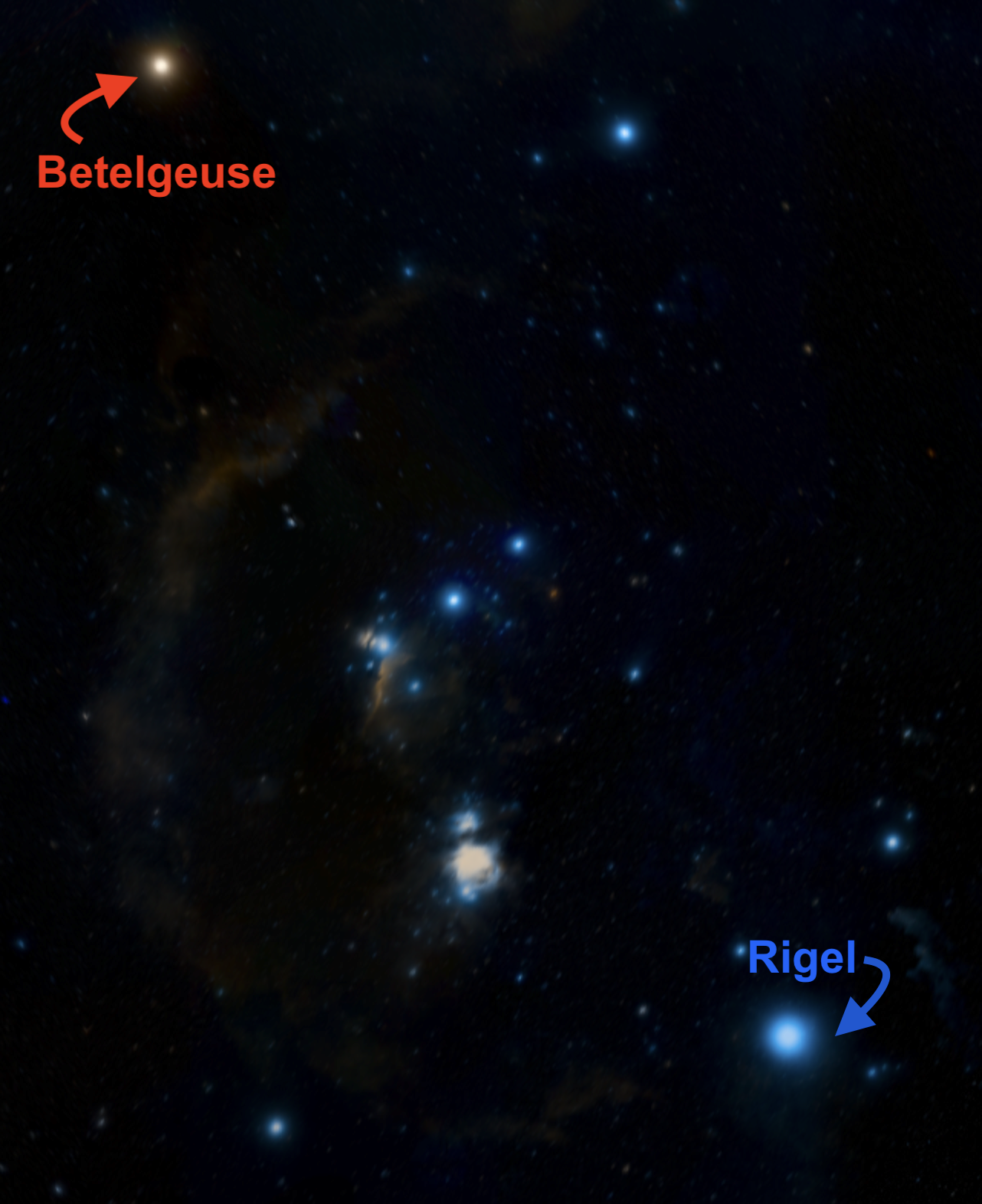This is a high-resolution model of the predicted transmission spectrum from a cloud-free “Hot Jupiter” exoplanet.
It is based on what astronomers know about planetary atmospheres and the physics and chemistry of atoms and molecules at the temperatures and pressures found in these planets.
Exploring Exoplanets
Tutorial: Modeling exoplanet atmospheres
Astronomers predict the theoretical spectrum they would expect to observe under ideal conditions.
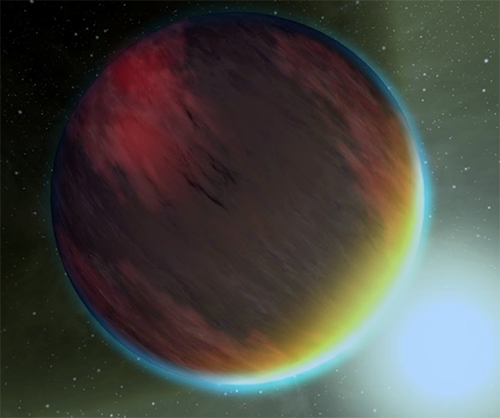
Each predictive model is specific to a particular set of atmospheric conditions.
Let’s explore some of these models before analyzing the real data.
Model 1 - Clear Skies
Compare the predicted features in the Clear Hot Jupiter Model to the laboratory atomic and molecular spectra
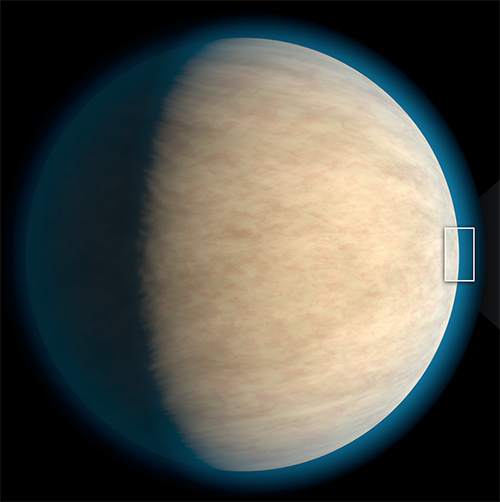
Select the comparison atoms and molecules in the bottom panel and complete the Spectrum Notebook Questions for the Tutorial.
Clear, Cloudy, or Hazy?
How do the models predict that different atmospheric conditions affect an exoplanet spectrum?
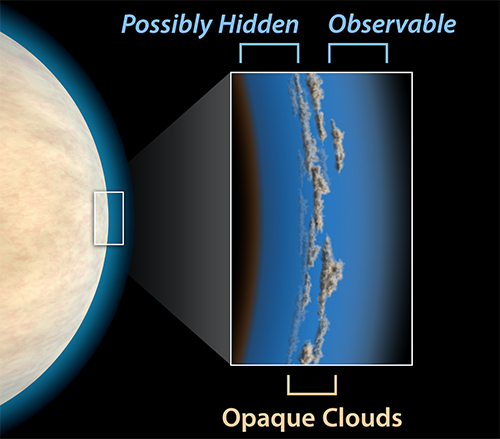
Based on the tutorial, continue completing the Spectrum Notebook Questions.
Clear, Cloudy, or Hazy?
How do the models predict that different atmospheric conditions affect an exoplanet spectrum?
Model 3 - Obscuring Hazes

Based on the tutorial, continue completing the Spectrum Notebook Questions.
Exploring Exoplanets.
Challenge 1:
WASP-17b Case Study:
How does real exoplanet spectral data compare to predicted models?
The top panel shows the transmission spectrum, captured by NASA’s Hubble Space Telescope, of a Hot Jupiter named WASP-17b.
The bottom panel shows the predicted model transmission spectrum for a Clear Hot Jupiter.
How do these spectra compare? Use the comparison dropdown menu to view different exoplanet models and different atoms and molecules. Can you draw any conclusions about what’s in the atmosphere of WASP-17b?
Write your answers in your Spectrum Notebook.
Exploring Exoplanets.
Challenge 2:
Comparative Exoplanetology!
How do atmospheric conditions vary among exoplanets?
Now that you’ve examined WASP-17b, let’s look at some other exoplanets. In the top graph, choose a transmission spectrum of any of the other Exoplanet targets.
Answer questions about it in your Spectrum Notebook.
Write your answers in your Spectrum Notebook.
Exploring Exoplanets.
Challenge 3:
Comparative Exoplanetology!
How do atmospheric conditions vary among exoplanets?
Choose a second transmission spectrum of any of the other Exoplanet targets.
Answer questions about it in your Spectrum Notebook.
Write your answers in your Spectrum Notebook.
Exploring Exoplanets.
Challenge 4:
You’re the Exoplanet Researcher!
What exoplanet should NASA’s James Webb Space Telescope study?
Your Spectrum Notebook. gives you guidance for creating a hypothetical proposal to NASA based on your questions about the Exoplanets you have examined.
Use this workspace to make decisions for your proposal, and to capture screenshots to describe the spectrum features for which you hope to get better data.
Congratulations.
You’re done!
You have applied your Spectrum Lab analysis skills in the same way that professional astronomers are doing in their search for other worlds and other Earths!
Join your class to discuss your proposal and questions you may have about how spectra can tell us about distant alien worlds.
Target Object

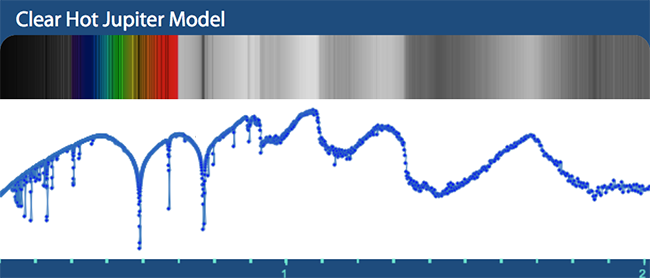
More Light
Wavelength (Microns)
Comparison Object

Comparison Object Name
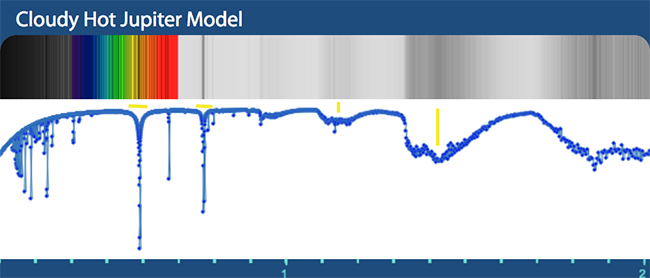
More Light
Wavelength (Microns)
